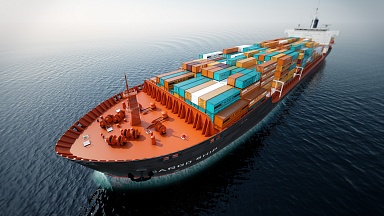The latest Port Performance Data compiled by the analyst reveals that vessel exchanges — containers handled — at major US, North European and Asian ports jumped between 10% and 70% in the first half of the year on the same period of 2020.
In North Europe, container move increases were led by Felixstowe, which saw and 18% leap in boxes handled, followed Antwerp, with an increase of 14%.
In Asia, Singapore’s 27% surge was followed by a 24% jump at Yantian and a 23% increase at both Shanghai and Ningbo.
However, Southern California’s Long Beach facilities recorded the highest increase of the ports surveyed. with a massive 73% more container moves per vessel call.
IHS Markit said call sizes had been growing prior to the pandemic outbreak, due to the increase in vessel sizes and tighter optimisation of networks, but the «strongly rebounding and unpredictable demand» had «amplified the trend causing delays at many global ports».
Turloch Mooney, associate director, maritime and trade, at IHS Markit, said: «The severe operational strain is caused by the surge in cargo volumes coming in much more concentrated loads.
«This spike in demand is placing heavy stress on ocean and landside operations, increasing yard congestion and cargo dwell times, with knock-on effects on equipment repositioning and intermodal links further fuelling the problem and resulting in sustained congestion at key global gateways.»
The higher volumes per call — and resulting longer time spent in port — has led to a backlog of containerships awaiting a free berth.
According to IHS Markit data, 40% of vessels destined for US west coast ports have to anchor to await a berth, while that drops to 26% in South-east Asia, 23% in North Europe, but only just over 10% at north-east Asian ports.
«The extent of the congestion has been a shock to many, both inside and outside the industry, and has prompted investigations into how certain container ports have become overwhelmed, and what can be done to improve resilience for the future,» said Mr Mooney.
Notwithstanding the big increase in vessel exchanges, terminal operators in North Europe and the US have some way to go to compete with their Asian counterparts to match their crane productivity.
IHS Markit notes that Asian ports load or unload a container in 27 seconds, on average, from large vessel calls, compared with the 46-second average at North European hubs and 76 seconds at US ports.
Meanwhile, supporting the IHS Markit analysis, the newly crowned largest containership in the world, the 23,992 teu Ever Ace, arrived at Felixstowe’s 8&9 berths on its maiden call at 9.21am on Sunday, with a reported exchange of 4,000 containers of imports and 4,000 export boxes, of which some 3,000 were empty.
The latest ETD from the master is showing as 10am Wednesday, the ULCV having occupied one of the two berths at the Felixstowe’ facility for around three days.




